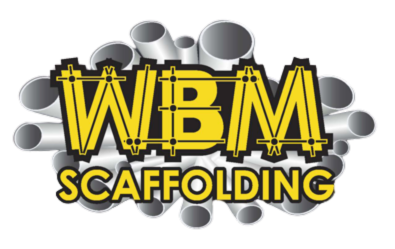Scaffolding is essential for safe work at height. But what happens when the ground below isn’t level? It’s a common concern on construction sites, gardens, sloped driveways and rural projects.We will explore whether scaffolding can be used on uneven ground, how it can be made safe, and what UK regulations say about this type of setup. This is written for contractors, homeowners, and anyone planning work where access is needed on challenging terrain.
Is It Possible to Use Scaffolding on Uneven Ground?
Yes, scaffolding can be used on uneven ground but only if it is set up properly by trained professionals. Modern scaffolding systems are adaptable and can be safely used on sloped, soft, or irregular surfaces.
However, there are specific methods and equipment required to ensure that the scaffold remains stable and compliant with UK health and safety laws.
Common Scenarios Where Ground Is Uneven
- Garden landscaping projects on slopes
- Building work on hillsides
- Driveway repairs on inclines
- Renovation work around older properties
- Construction sites with disturbed ground or drainage channels
In all these situations, standard flat-footed scaffolding won’t be safe without adjustments.
How Scaffolders Make Uneven Ground Safe
Professional scaffolders use a few key tools and techniques to level and stabilise scaffolding on uneven ground:
1. Base Plates and Sole Boards
Base plates sit at the bottom of scaffold poles. On uneven or soft ground, they are placed on timber sole boards to distribute weight evenly and prevent sinking or tipping.
2. Adjustable Base Jacks
These are screw jacks that allow for height adjustment at each leg of the scaffold. Scaffolders use spirit levels and plumb lines to make sure the structure is vertical, even if the ground isn’t.
3. Scaffold Ties and Bracing
Once erected, the scaffold is securely tied to the building or structure it serves. Diagonal bracing and horizontal ties improve rigidity, which is especially important on unstable ground.
4. Ground Preparation
In extreme cases, scaffolders may level the area first using compacted hardcore or trench plates. In some cases, temporary footings are created.
What the Law Says UK Regulations
The UK has strict rules about working at height. According to the Work at Height Regulations 2005 and HSE guidance:
- Scaffolding must be stable and secure, regardless of surface type
- A risk assessment must be carried out before work begins
- Only trained and competent people should erect or modify scaffolding
- The scaffold must be inspected before first use and every 7 days
Even if the ground is uneven, the same legal expectations apply. It is the responsibility of the contractor and scaffolding company to make sure the installation is safe.
The Risks of Poor Setup on Uneven Ground
Failing to properly adjust scaffolding on sloped or unstable surfaces can lead to:
- Scaffold collapse
- Falls from height
- Material slipping or tipping
- Damage to nearby property
- HSE enforcement action
To reduce these risks, always work with a trained scaffolding company with experience in uneven terrain.
Tips for Homeowners or Site Managers
If you are overseeing a project that involves uneven ground, here are a few things you can do:
- Discuss the ground conditions in advance with your scaffolding contractor
- Take photos of the area and share them during quoting
- Remember, to ask about base jacks and sole boards if you’re unsure how the scaffold will be secured
- Don’t attempt to modify scaffold setups yourself
If you’re unsure about regulations or who is responsible for what, the Health and Safety Executive offers up-to-date guidance on best practice.
Local Expertise Makes a Difference
Setting up scaffolding on uneven ground is not a one-size-fits-all process. Each site needs a tailored approach. At WBM Scaffolding, we regularly install scaffold structures on sloped driveways, gardens and uneven ground across Kent.
We use adjustable jacks, proper baseboards, and careful planning to make sure the scaffold stays stable. You can view some of our previous work on Facebook or check our reviews on Checkatrade.
Need advice or a quote for a complex site? Contact us here to speak with our team.
Summary
So, can scaffolding be used on uneven ground? Yes as long as it is done professionally and safely. The key is to adjust each leg of the scaffold to create a level working platform, no matter the surface underneath.
With the right equipment and expert installation, uneven ground doesn’t need to be a barrier to safe work at height. Whether you’re planning a house painting job on a sloped garden or managing a site with tricky terrain, understanding your options can keep everyone safe and your project on track.
